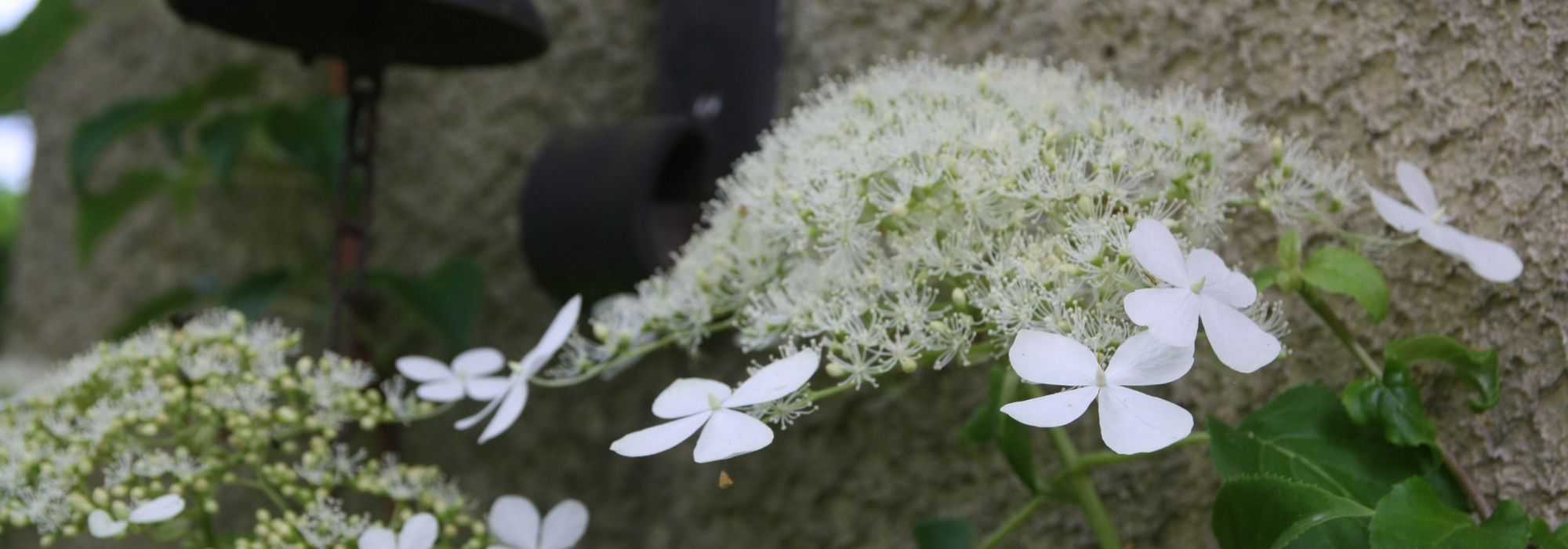
Climbing plants for walls and façades: which one to choose?
12 plants suitable for all exposures
Contents
Covering walls with climbing plants can hide unsightly sections or showcase more attractive ones. Vegetation also provides significant insulation, reducing summer heat gain and, when foliage is evergreen, acting as a protective layer in winter. When choosing, consider the exposure of the wall to be planted, as each creates different light levels and temperature conditions.
Climbing plants for north-facing walls (shade)
North-facing aspects receive less light but have smaller temperature swings. A number of climbing plants do very well in these conditions.
Climbing Hydrangea
The Climbing Hydrangea is a climbing with a beautiful summer flowering, in large, airy white umbels, which stand out against its foliage. This can be evergreen, as with Hydrangea seemanii or deciduous with Hydrangea petiolaris. Variety ‘Silver Lining’ also offers striking grey and white variegation, while the evergreen leaves of ‘Winter Surprise’ turn a handsome purple late in the season and remain decorative year-round.
- Size: 3 to 6 m
- Soil: neutral to acid, fresh and light.
- Hardiness: -15°C to -25°C
- Attachment method: attaches itself unaided using its climbing roots.
→ Discover our range of Climbing Hydrangeas, and our sheet Hydrangea: Planting, pruning, care.
Schizophragma
Schizophragma is a cousin of the climbing hydrangea. It is highly valued for its spectacular flowering that resembles a cloud of graceful butterflies. Mostly deciduous, some are not very vigorous, such as Moonlight, whose silvery foliage with strongly marked veins is particularly decorative. Others, however, can become giants, such as Fauriei, semi-evergreen with very large inflorescences. While flowers are mostly white, Rose Sensation takes on pink. Schizophragma grows slowly and begins to gain size after the third year.
- Size:4 to 15 m
- Soil: neutral to acid, fresh but well drained, rich and light.
- Hardiness: -10°C to -20°C
- Attachment method: attaches itself unaided using its climbing roots.
→ Find all our Schizophragma varieties and our sheet on Schizophragma: Planting, cultivation, care.
Ivy
Ivy should be reserved for sound walls, where it will cause no damage. Its evergreen foliage provides shelter for abundant wildlife. Flowers are insignificant, but berries are a much-loved food source for birds. Very vigorous and a good insulator, it displays solid or variegated foliage such as ‘Marginata Elegantissima’, whose green and cream tones are highlighted by a pink edge. ‘Sagittifolia’ stands out for its very deeply cut foliage, adding a touch of originality.
- Size: 1 to more than 12 m
- Soil: all types, even poor and dry
- Hardiness: -15°C to -25°C
- Attachment method: attaches itself unaided using its climbing roots (reserve for sound, well-pointed walls)
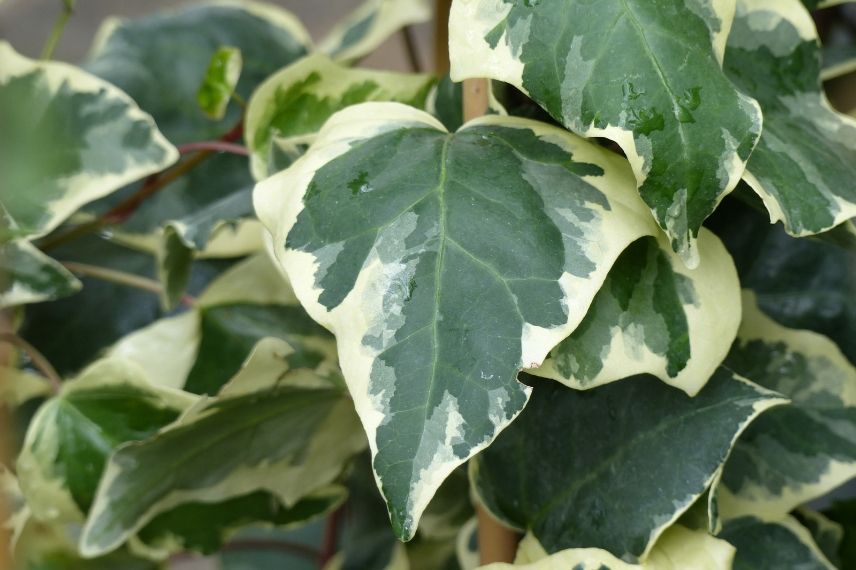
Attractive variegated foliage of Hedera marginata Elegantissima
→ Discover our range of climbing Ivies and their sheet Climbing Ivies: planting, cultivation, care.
Climbing plants for south-facing walls (sun)
South-facing, warmest and driest exposures put plants under strain, due to large 24-hour temperature swings and higher water needs. Favour climbing plants that love to soak up the sun!
Bougainvillea
Bougainvillea (or bougainvillée) particularly likes heat. Mediterranean climbing plant, it is best suited to the mildest regions where its brightly coloured, sunlit bracts can be admired, which flower from May to September, sometimes longer. ‘Blanc-rose’ takes on a pale pink-white, ‘Rouge sang’ a rich crimson, while ‘Violet de Mèze’, one of the hardiest, shows mauve tones. The foliage of this climbing plant may be deciduous, semi-evergreen or evergreen depending on cultivar.
- Size : 5 to 8 m
- Soil : light, well-drained, free-draining, lime-free
- Hardiness : does not tolerate frost (best in mild climates)
- Attachment : needs a little help; attaches to its support with its prickles
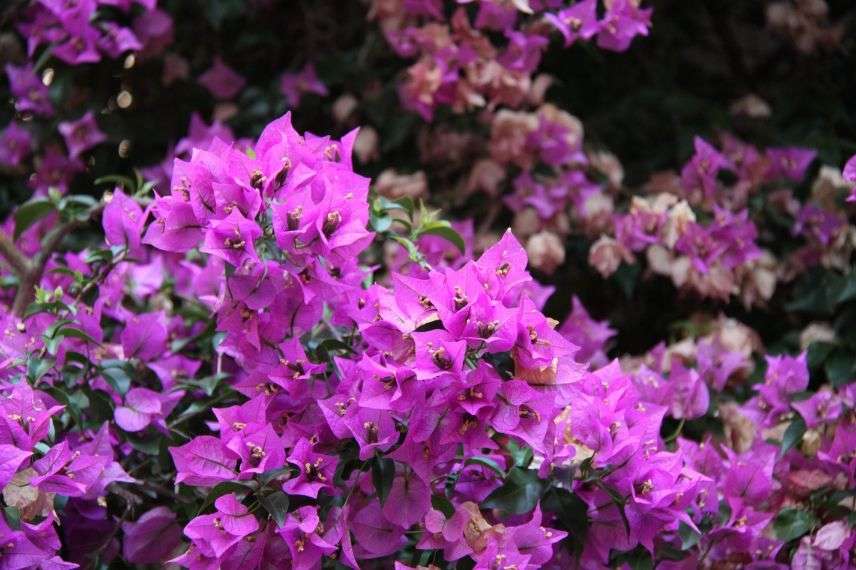
Bougainvillea
→ Discover our selection of bougainvilleas
Wisteria
One of the most romantic climbing plants, wisteria is famed for its racemes of richly scented flowers. This vigorous, very long-lived liana forms, after a few years, genuine trunks from which long, sturdy framework branches develop and show off when flowers in white, pink or blue festoon a façade. Inflorescences, which flower between April and June, measure around 10 cm on Wisteria venusta, but can extend up to 1 metre for variety ‘Macrobotrys’. ‘Violacea’ is notable for its double violet flowers. Whether single-flowering or perpetual, its deciduous foliage takes beautiful late-season colours, and can show cream variegation as with ‘Variegata’.
- Size : 4 to over 15 m
- Soil : poor or fertile, cool but well-drained, non-calcareous
- Hardiness : -15°C to -20°C
- Attachment : twines vigorously around its support and can distort it if not sturdy
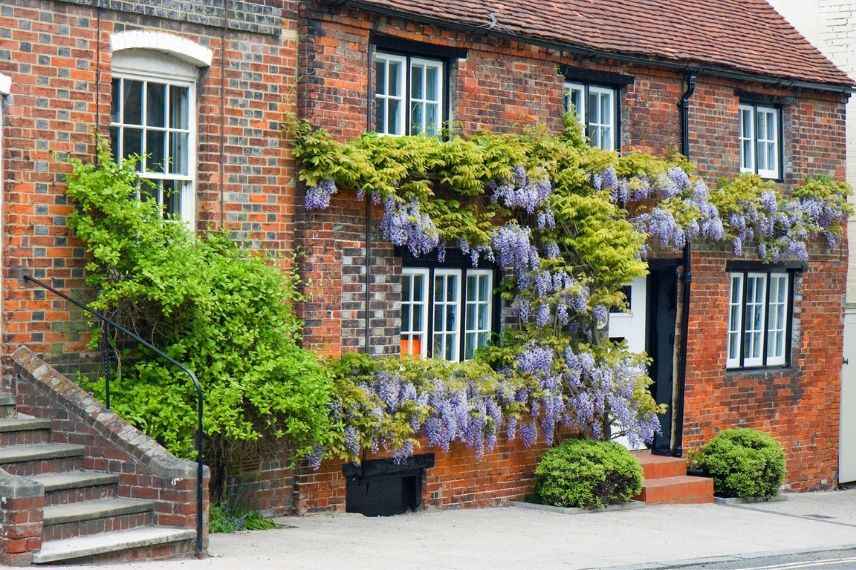
Wisteria trained against a house façade
→ Find our wide range of wisterias, and the guide on Wisterias: How to plant, prune and care for them?
Jasmine
Large liana with woody climbing stems, jasmine occurs in several species with distinct qualities. Jasminum officinale is one of the hardiest of the fragrant species. In summer, and again in autumn, its delicate green foliage is covered with star-shaped white flowers with a heady scent. Deciduous to semi-evergreen depending on winter severity, fairly fast-growing and not very susceptible to disease, it can cover a large façade. More compact cultivars exist, such as ‘Aureum’, with golden leaves, or ‘Clotted Cream’, whose flowers are cream with a yellow tint.
Winter jasmine flowers in the heart of the off-season. Unfragranced, its small yellow star-flowers, which appear on the bare wood between December and March, brighten the gloomiest days. Also deciduous, it poses no hardiness issues and is fairly disease-resistant.
- Size : 2.5 m to 10 m depending on variety and growing conditions.
- Soil : any ordinary soil, deep, remaining cool, neutral, acidic or calcareous
- Hardiness : -12°C (leaves drop around -5°C for common jasmine), and even lower for winter jasmine.
- Attachment : twining stems that eventually attach to their support, except for winter jasmine, whose stems should be trained against a support.
→ Discover our different jasmine varieties, and the guide Jasmines: Planting, maintenance, pruning.
Discover other Climbers
View all →Available in 0 sizes
Available in 0 sizes
Available in 0 sizes
Available in 0 sizes
Available in 0 sizes
Available in 1 sizes
Available in 1 sizes
Available in 1 sizes
Available in 1 sizes
Available in 1 sizes
Climbing plants for west-facing walls (afternoon and evening sun)
When plants are struck by afternoon and evening sun rays, they have had time to acclimatise gradually to the rise in temperature. Low-angle light furthermore enhances the colours of flowers and foliage. However, prevailing winds can blow there more strongly than elsewhere in the garden. West is, however, the easiest aspect to plant.
Climbing roses
The climbing roses are inseparable from romantic gardens, with generous and often fragrant flowering. They produce long stems that are covered, from about May and then in successive flushes until autumn depending on variety, with single or double flowers, their scent more or less pronounced. Some offer extra interest when their fruits, coloured yellow, orange or red, stud the branches. These are easy, robust and long-lived climbing plants that elegantly dress a façade. With the impressive number of varieties, choosing is the hardest part. Mme Isaac Pereire produces very fragrant double flowers in successive flushes until autumn. Zephirine Drouhin, besides being fragrant, is almost devoid of thorns. Francis Lester is a non-perpetual liana rose, but its simple flowers of natural charm are followed by clusters of orange berries that persist for a long time on the branches. Liana roses are also giants capable of covering very large walls. English Roses combine appearance and fragrance of old roses with qualities of modern ones.
- Height: 2 or 3 m to over 10 m for liana roses
- Soil: any rich, cool soil, clayey, rich in organic matter but the rose tolerates less favourable situations. Preference for neutral to slightly acidic soils.
- Hardiness: most are very hardy.
- Fixing method: must be fixed to a support (trellis, wire…) using soft ties.
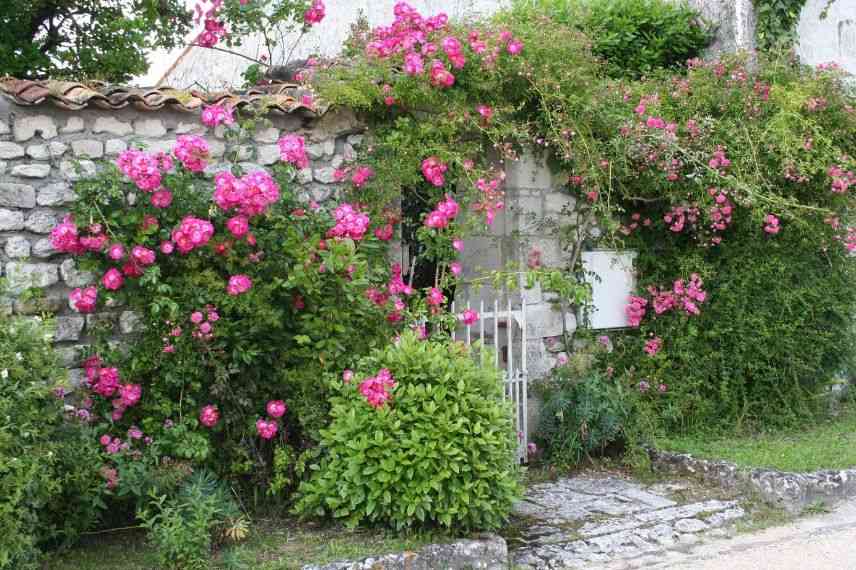
Climbing rose partially covering a stone wall
→ Discover our wide selection of climbing roses, all our varieties of liana roses and our selection of climbing English Roses, as well as the factsheet Roses: Best varieties and how to grow them.
Star jasmine
The Trachelospermum, called False jasmine or Star jasmine, is an easy climbing plant to grow in climates that are not too cold. Its evergreen, glossy foliage is green in the species type. Variegatum and ‘Sun Lover’ offer variegated versions. Star jasmine foliage can sometimes turn purple under the effect of cold, a characteristic even more marked in the variety ‘Winter Ruby’, with its warm winter hues.
The fragrant flowering, which occurs in early summer, is white, tinged with pink in ‘Pink Showers‘ and even yellow for the Asian jasmine. Decorative all year round, this climbing plant whose branches become lignified with age is a safe bet.
- Height: 3 to 6 m for truly climbing forms
- Soil: any cool but well-drained soil, fairly fertile. Once established, tolerates dry soils very well.
- Hardiness: -10°C to -15°C depending on drainage.
- Fixing method: its voluble stems, once trained, twine around a suitable support (trellis, taut wires)
→ Discover our selection of Trachelospermum, and the factsheet on Jasmines: Planting, maintenance, pruning.
Virginia creeper
The name Virginia creeper covers several genera, such as Parthenocissus, Ampelopsis, Vitis coignetiae or certain species of Vitis. All are ornamental vines, prized for their deciduous foliage, highly decorative and with changing hues, capable of beautifully festooning a wall from spring to autumn. Fast-growing, Virginia creeper is undemanding, hardy and establishes for many years. Flowering, discreet, does not offer real decorative interest, but it is very melliferous. Foliage is, however, the strong point of this climber. It can turn purple at bud burst period, or a bright golden yellow in ‘Fenway Park’. Beautiful variegations mixing pink, white, green and red paint the foliage of some varieties, such as ‘Star Shower’. All stand out for their warm autumn colours, which visually set alight the wall they climb. The fruiting, not edible, provides an additional asset. The small bluish, violet or purplish berries are not only attractive but also much appreciated by birds.
- Size: 4 to over 20 m depending on variety
- Soil: ordinary soil, neutral or slightly calcareous, cool but well drained
- Hardiness: -15°C and beyond
- Attachment: attaches to walls thanks to suction discs that do not damage the support.
→ Discover our selection of Virginia creepers as well as the factsheet Virginia creeper: Planting, maintenance, pruning.
Climbing plants for east-facing walls (morning sun)
Delicate position, east generally receives little rain. It is also the aspect that sunlight reaches first, causing a sudden thaw in winter, a phenomenon plants do not much appreciate. Some climbers, however, manage to perform well in these conditions.
Honeysuckle
Honeysuckle is well known for its summer flowering with a characteristic scent. Among most popular varieties, ‘Halliana’ and ‘Hall’s Prolific’ feature in many gardens. Flowers display a dominant colour highlighted by secondary hues. Some are mainly yellow, as in Lonicera tellmaniana, white for woodland honeysuckle ‘Graham Thomas’, or pink with Lonicera periclymenum ‘Fragrant Cloud’. Foliage of this voluble liana is generally evergreen and, while often green, some varieties show striking originality, such as ‘Pink Aperitif’, a recent introduction whose foliage blends cream, prawn-pink and purple through the seasons. If variegated foliage appeals, variety ‘Harlequin’ is for you, but its green-and-white foliage is deciduous.
- Height: 2 to 6 metres.
- Soil: any rich, deep soil that is not too heavy, fresh but well drained.
- Hardiness: -15°C (a little less for some species).
- Support: requires a trellis on which branches twine.
→ Discover our wide range of honeysuckles as well as the fact sheet Honeysuckle: Planting, pruning and maintenance.
Schisandra
Little-known Asian liana, Schisandra is nevertheless a climber of high ornamental and medicinal value. With voluble or woody climbing stems, its foliage is evergreen or deciduous depending on species. Late spring flowering (May to June) in loose clusters is sometimes remarkable, as with Schisandra grandiflora, a radiant white set off by broad, strongly veined foliage, or with Rubiflora, of deep red. These climbers, nicknamed “Chinese five-flavour berries“, produce small aromatic fruits late in season with a complex flavour, tinged red or black. Take care, however: consumption requires some precautions.
- Height: from 3 to more than 8 metres depending on species.
- Soil: deep, rich and humus-bearing, drained but consistently fresh.
- Hardiness: -15°C and beyond.
- Support: to be trained against a structure fixed to a wall.
→ Find our selection of Schisandra.
Hop
Unusual climber, Hop is endowed with a record growth rate. It can indeed cover a wall in a single season. Very resistant to cold and diseases, it is valued for its fruiting, which appears on female plants and is used in beer, but also for its foliage, which provides excellent cover. Green in variety ‘Magnum’, it shows, with variety ‘Aureum’, a bright yellow when breaking bud in spring, before turning a pale tender green that afternoon sun does not scorch in this aspect. Deciduous, this liana regenerates every year.
- Height: 5 to 6 metres
- Soil: any rich, deep and cool soil, even heavy and clayey.
- Hardiness: down to -28°C
- Support: its voluble stems twine unaided around trellises placed against a wall.
→ Find our selection of hops, as well as the fact sheet Hop: Planting, cultivation and uses
- Subscribe!
- Contents
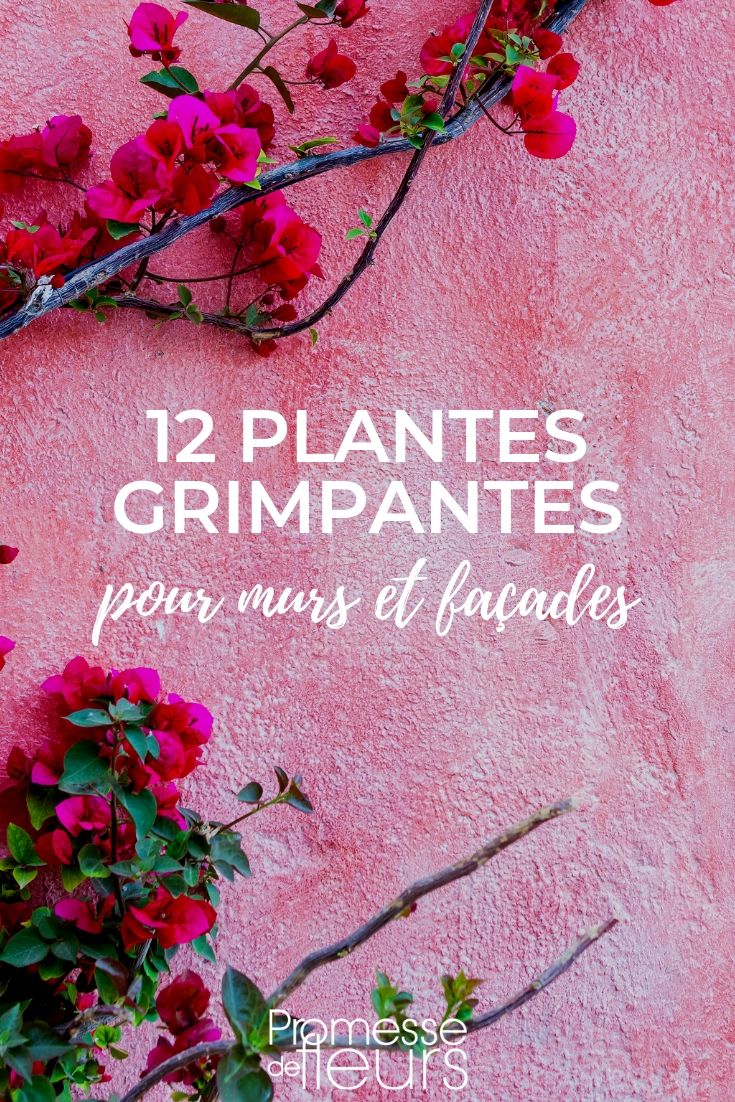































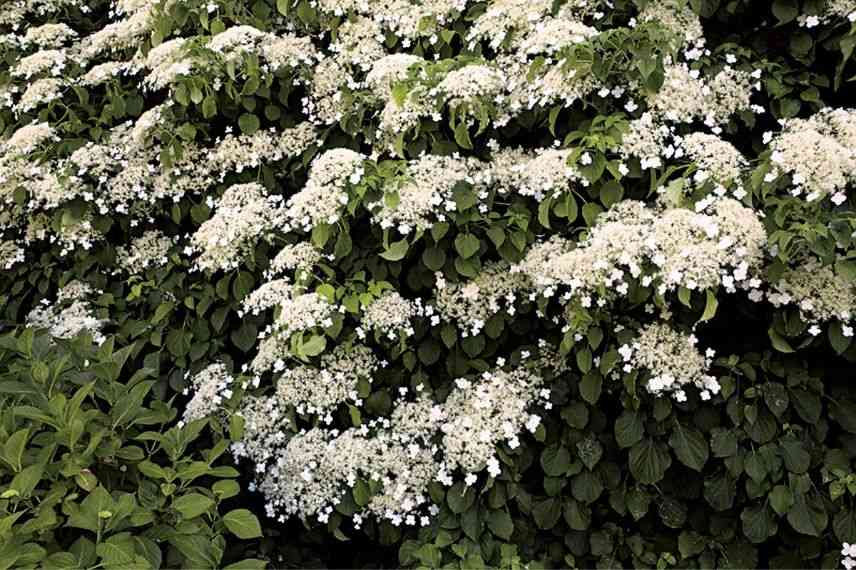
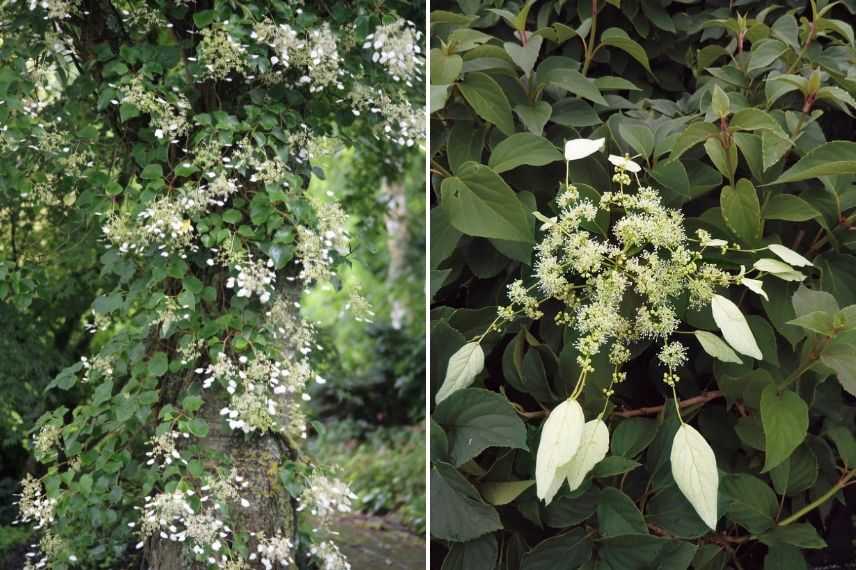
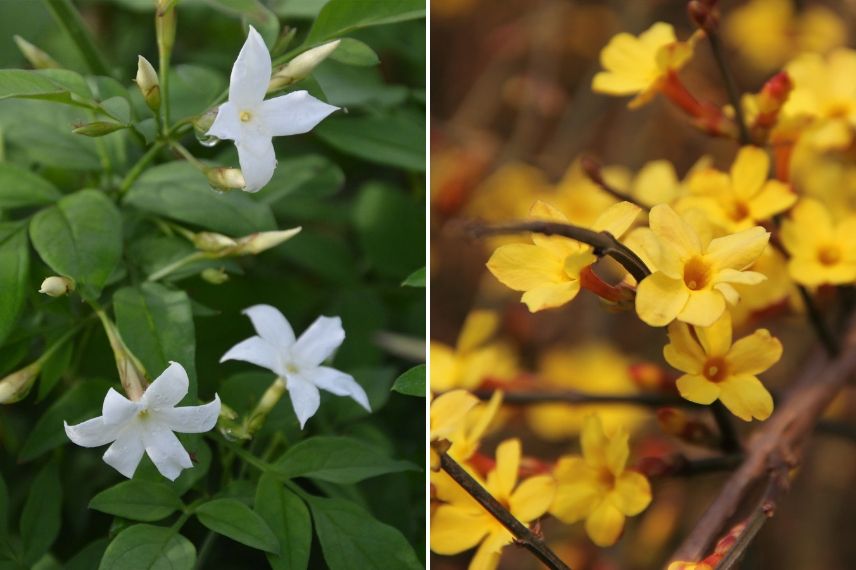
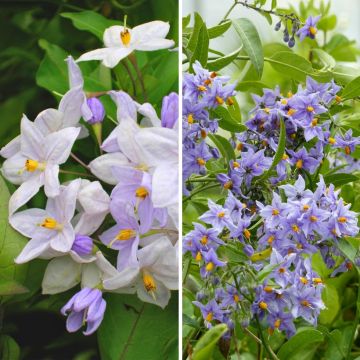
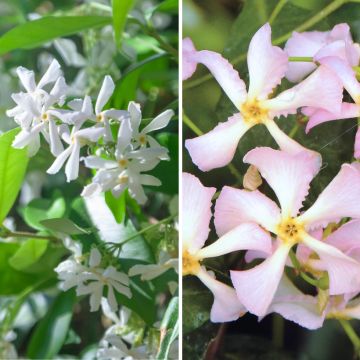

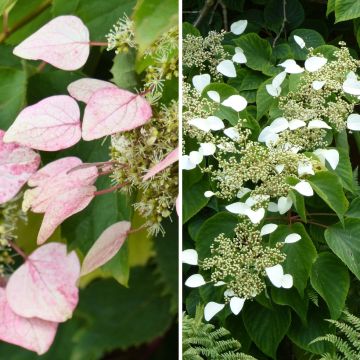
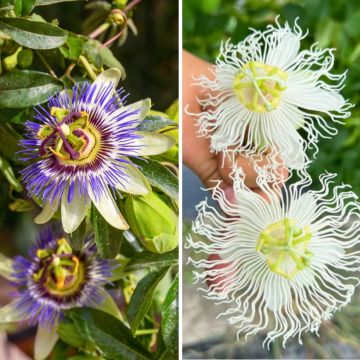

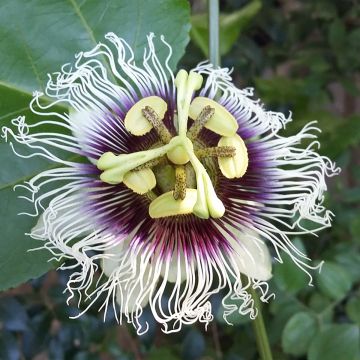
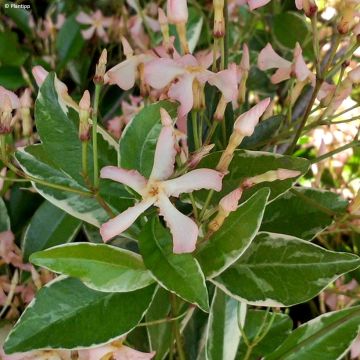
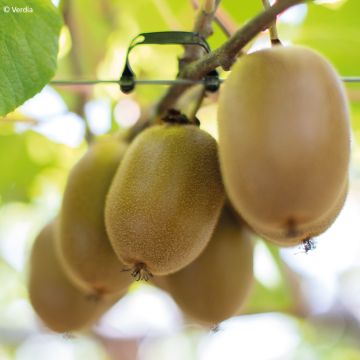

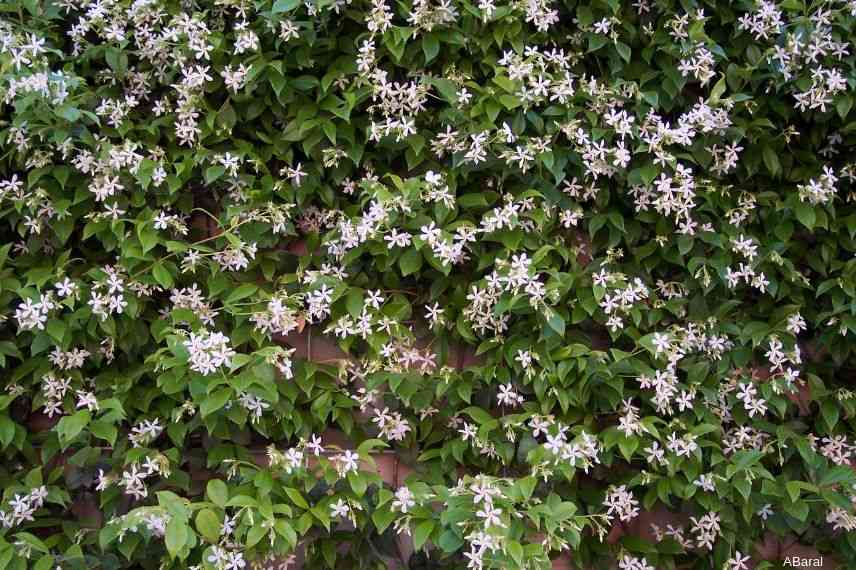
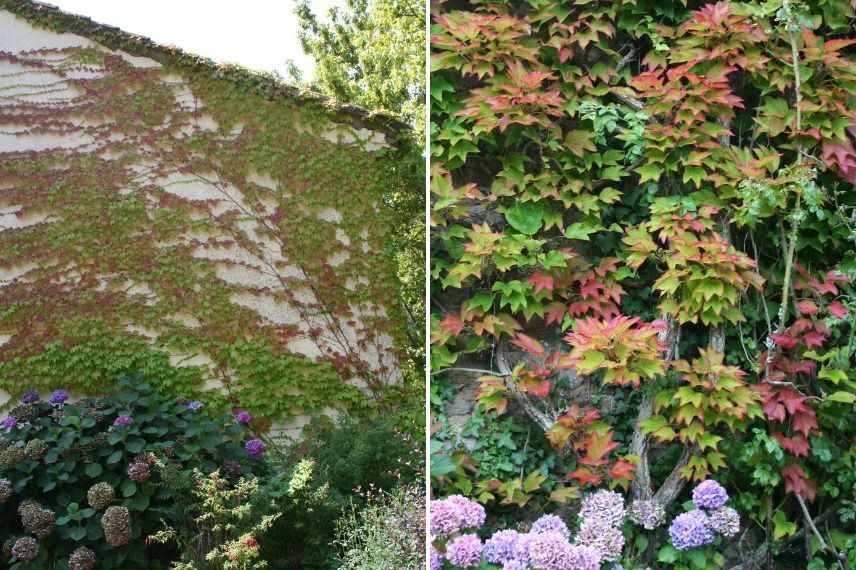
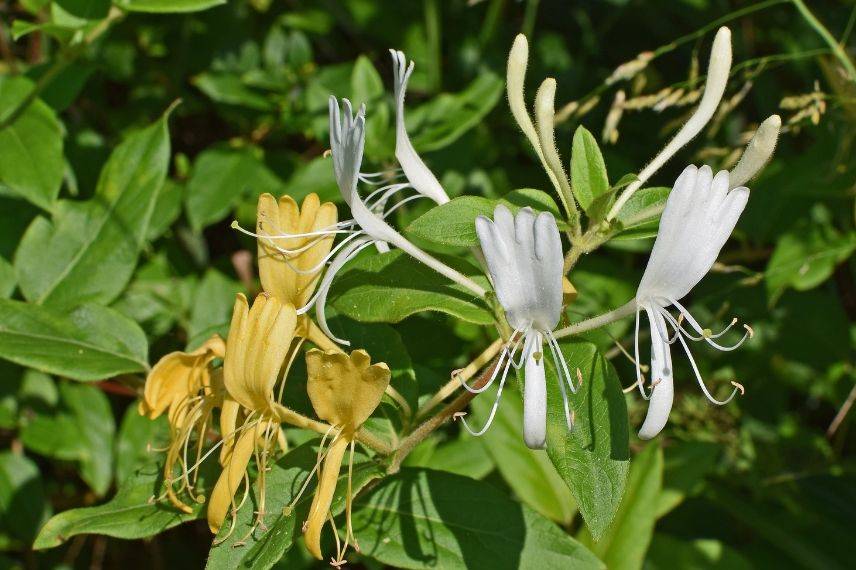
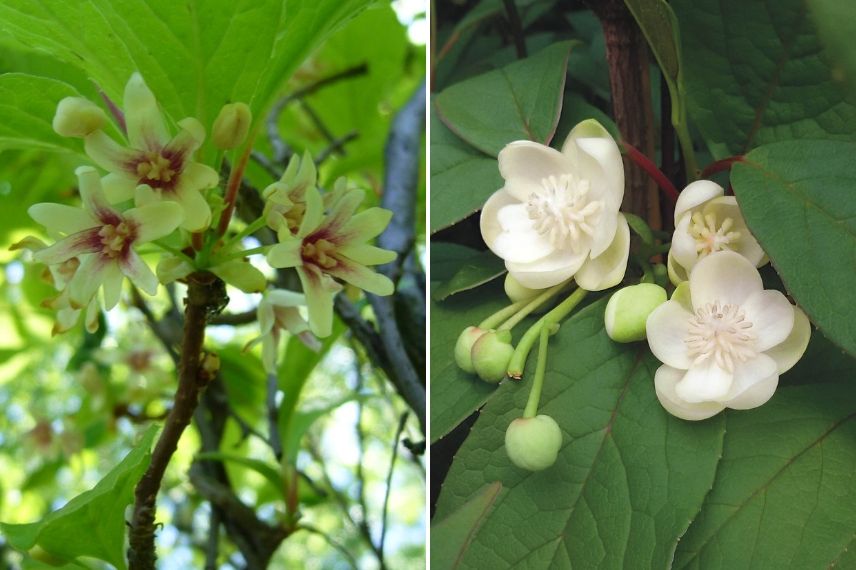
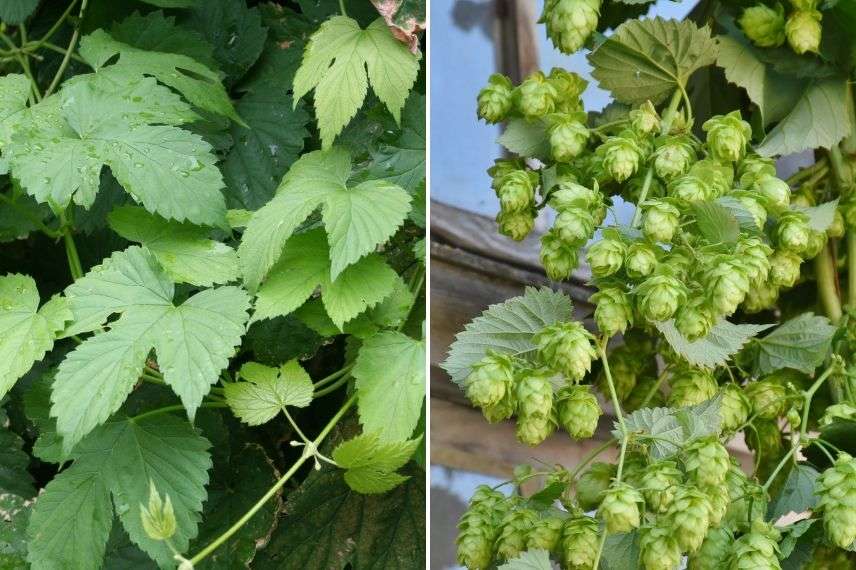
Comments